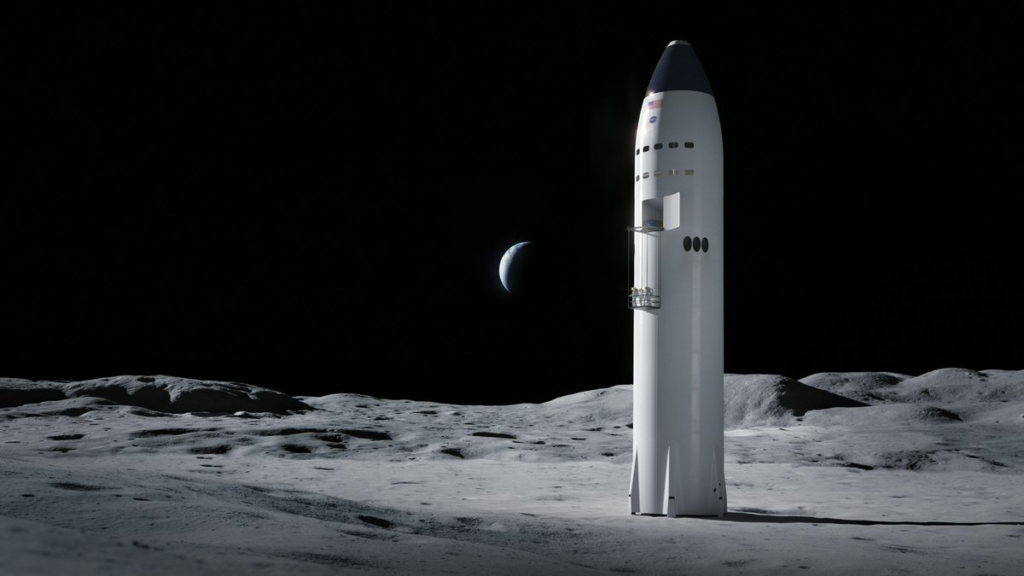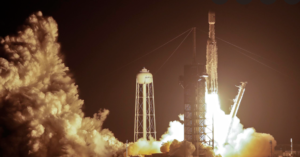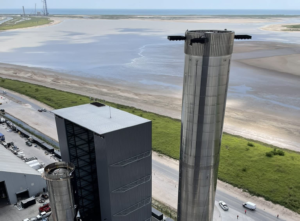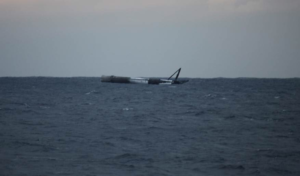
Why Starship Might Not Land Humans On Artemis III
Earlier this month SpaceX released a few new videos of Lunar Starship Raptor testing. This included a descent burn test along with a chilled raptor ignition simulating the journey through space. Besides these examples, there have been a few other instances of progress on the lunar Starship. This makes sense as the company needs to have a working lunar variant ready by Artemis III where they plan to land humans on the surface.
At least that was the plan, however, new timelines and work within NASA mean Artemis III might not land humans on the surface at all. This would practically negate the lunar Starship for that specific mission as its main purpose is transporting humans from lunar orbit to the surface and back. This comes in addition to possible delays as the 2025 mission date becomes more ambitious by the day.
Recent comments also highlight that some NASA officials are worried about the progress of SpaceX’s lunar lander. A system that still has quite a bit of work left before being ready for a Moon landing. Here I will go more in-depth into the progress on a lunar Starship, NASA’s concerns, possible Artemis III changes, and more.
Progress Concerns

Back in 2021, NASA selected SpaceX to continue the development of the first commercial human lander that will safely carry the next two American astronauts to the lunar surface. While Artemis I and II include journeys to the Moon, III is supposed to land them on the surface for the first time in over half a century. Here, the Space Launch System rocket would launch four astronauts aboard the Orion spacecraft for their multi-day journey to lunar orbit. There, two crew members will transfer to the SpaceX human landing system (HLS) for the final leg of their journey to the surface of the Moon. After approximately a week exploring the surface, they will board the lander for their short trip back to orbit where they will return to Orion and their colleagues before heading back to Earth.
However a few months ago, speaking at a joint meeting of the National Academies’ Aeronautics and Space Engineering Board and Space Studies Board, Jim Free, NASA associate administrator for exploration systems development, said Artemis 3 was in danger of being delayed from December 2025 to some time in 2026. He went on to clarify that SpaceX and the Starship HLS system in particular was what he was worried about. Specifically, he pointed out the number of Starship launches that SpaceX has to carry out to be ready for Artemis 3. Each Starship lander mission requires launching the Starship lander itself as well as several “tanker” Starships to fuel the lander in Earth orbit before it goes to the moon.
“That’s a lot of launches to get those missions done,” Free said. “They have a significant number of launches to go, and that, of course, gives me concern about the December of 2025 date” for Artemis 3. He continued by saying, “With the difficulties that SpaceX has had, I think that’s really concerning. You can think about that slipping probably into ’26” he said.
Even more recently, speaking at an Aug. 8 briefing at the Kennedy Space Center, he talked about the possibility of changing the Artemis III mission plan depending on what’s ready. “We may end up flying a different mission if that’s the case,” he said. “If we have these big slips out, we’ve looked at if can we do other missions.” Artemis 3 could also change based on the outcome of Artemis 2, he added. “One thing we learned from ISS is to make sure we’re flexible so we keep human spaceflight viable,” he said, such as changing the assembly sequence of the station based on when hardware was available. “I think it’s incumbent upon us to do that,” he said. “We’re trying to look at all of the missions that we could fly to keep learning.”
He finished by saying, “When we come up with a date, December of 2025 or whatever that date might be, we want to have confidence for our teams that we all have a realistic path to get there.” These comments make it clear that some NASA officials are not too confident in SpaceX. At the same time, however, other critical mission aspects like SLS, Orion, Ground Systems, etc., each need a lot of work and a successful Artemis II launch if they want to stay on track.
Physical Progress

Despite these concerns from NASA, SpaceX has been working on Starship and even the lunar variant in particular for a while now. Most recently we saw the two Raptor engine tests. Last month, SpaceX demonstrated a vacuum-optimized Raptor’s performance through a test that successfully confirmed the engine can be started in the extreme cold conditions resulting from extended time in space. They pointed out that one challenge that differentiates Artemis missions from those in low Earth orbit is that the landers may sit in space without firing for an extended period of time, causing the temperature of the hardware to drop to a level below what they would experience on a much shorter low Earth orbit mission.
The reality is, SpaceX started working on the lunar variant right after they were picked for the mission. One of the first testing milestones SpaceX completed under its Artemis III contract was in Nov. 2021. This was also an engine test, demonstrating Raptor’s capability to perform a critical phase of landing on the Moon. In a 281-second-long test firing, Raptor demonstrated the powered descent portion of the mission, when the Starship HLS leaves its orbit over the lunar surface and begins its descent to the Moon’s surface to land. The test had two goals: to show Raptor’s ability to change the level of engine power over time, known as its throttle profile, and for the engine to burn the full length of time of the powered descent phase. The successful test provided NASA with early confidence in the company’s engine development.
It’s important to point out that while this specific burn was for landing, the main thrusters when Starship gets closer to the surface will be much higher on the vehicle to avoid launching dust and debris everywhere.
We then have general Starship progress which obviously applies to these future missions. Beyond the first launch back in April, the company is already practically ready for the second launch and is just awaiting approval. The differences between the first flight vehicle and the second showcase the speed at which SpaceX is able to upgrade and make changes once flight data is available. If they sort out launch regulations and continue working at a fast pace, both Starship and the lunar Starship could make a lot of progress in the next few years.
If NASA eventually decides not to land humans on the Moon apart of Artemis III, it will likely turn into a mission similar to Artemis II. Then Artemis IV would be more similar to III with the first humans to land on the surface. Either way, looking at the current Artemis III mission profile gives a better idea of what SpaceX needs to complete and have ready.
Before the crew launch, SpaceX will launch a storage depot to Earth orbit. A series of reusable tankers will carry propellant to the storage depot to fuel the human landing system. The uncrewed Starship human landing system will then launch to Earth orbit and rendezvous with the storage depot to fill its tanks before executing a translunar injection engine burn and traveling approximately six days to NRHO where it will await the Artemis III crew.
When both spacecraft have arrived in NRHO, Orion will dock with the Starship human landing system in preparation for the first lunar surface expedition of the 21st century. Once the crew and their supplies are ready, two astronauts will board Starship and two will remain in Orion. Orion will undock and back away from Starship to remain in NRHO for roughly one orbit around the Moon, lasting about 6.5 days. This will match the length of the surface expedition, so as Orion completes its orbit, the two person surface crew will finish their work on the surface in time to launch back up to meet the spacecraft.
When their surface expedition is complete, the two astronauts will lift off the surface of the Moon and head back to NRHO in Starship to reunite with their crewmates in Orion. After docking, the crew will spend up to five days in orbit, transferring samples between the vehicles and preparing for the journey back to Earth. This encompasses the main responsibilities of SpaceX and the lunar Starship on that specific mission.
SpaceX also has a few requirements to meet before they can transport humans to the surface and back. Here, after a series of tests, SpaceX will fly at least one uncrewed demo mission that lands Starship on the lunar surface. When Starship has met all of NASA’s requirements and high standards for crew safety, it will be ready for its first Artemis mission. This adds some extra time pressure as SpaceX not only needs to get Starship operational, but complete a few mission objectives first. At the same time, there are still so many unknowns on both NASA and SpaceX’s side in regard to this future mission. The outcome and launch date of Artemis II, and future Starship launches all will have an effect on the Artemis III date and plan. Something to keep an eye on in the coming months. Hopefully, sometime soon SpaceX gets its second test flight approved and the results are good. This alone would be a significant step for Starship and a good sign for the future of the lunar variant.
Conclusion
SpaceX is continuing to work on Starship and the lunar variant for Artemis III. Some NASA officials however are not too confident in the company’s aggressive timeline. This could end up changing the Artemis III mission profile and delaying the landing of humans on the surface. We will have to wait and see how it progresses and the impact it has on the space industry.



